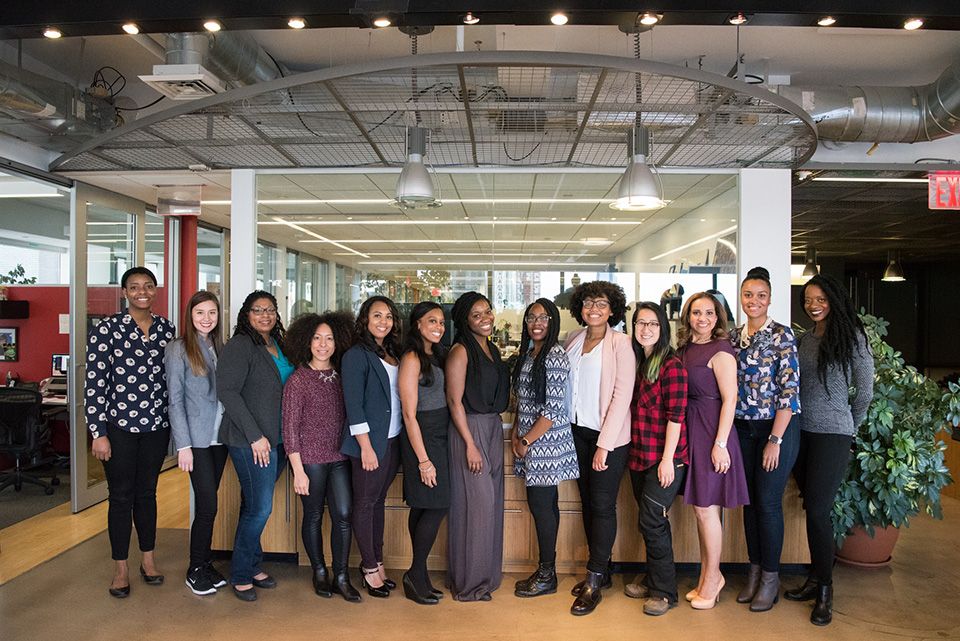We’ve all heard about studies showing that companies with greater diversity and inclusion perform better. Gender-diverse environments in particular are linked to increased retention and engagement, as well as greater innovation and healthier balance sheets. But new evidence shows an even more compelling case to be made for the benefits of having women leaders at the very top of the organization.
An inclusive workplace is an environment where employees feel valued, trusted, and able to express their authentic selves. Inclusivity helps stimulate unique ways of thinking that enhance a team’s ability to understand their consumer and develop original ideas. Employee creativity increased by 59.1% in companies that maintained a diverse work environment while employee success rates in analyzing customer needs increased by 37.9%. A 2017 report from Boston Consulting Group found that on average, companies with higher diversity and inclusion rates generate 38% more revenue from “innovative products and services” than their less diverse competitors.
Such advancements can be attributed to the fact that gender-diverse teams are more likely to challenge one another in thoughtful, effective ways. Collaborative cultures that value diverse perspectives are well-equipped to handle internal conflict such as constructive criticism. And an executive team that is comfortable with confrontation is a team that can effectively mitigate risk. When employees have the ability to point out one another’s mistakes, they are also able to create unique solutions that prevent similar mistakes from occurring in the future.

Advantages to Women in the C-Suite
A recent study from Harvard Business Review conducted by Corinne Post, Boris Lokshin, and Christophe Boone shows that the benefits are even greater when women are in the C-suite. Impressive achievements under women-led executive teams include increased profitability and minimized risk-taking. The study also showed that collaborative thinking and openness to change increased, as well as efforts towards socially-informed decision making.
The ability to approach change with an open mind allows an organization to view all sides of a problem in order to create an optimal solution, ultimately leading to better solutions and an increase in key performance indicators.
A Measured Approach to Risk-Taking
Women on executive teams possess the unique ability to simultaneously prevent speculative behaviors while encouraging change. Gender-diverse senior management teams sampled in the HBR study increased their investments into research and development by 1.1% – approximately $6,538 million!
And while female executives are more likely to challenge the status quo, they are also more likely to engage in proactive behaviors that promote long-term success. Assertive and risk-taking behaviors from male colleagues may be tolerated and even celebrated by upper management, but women must approach their business proposals with a certain degree of foresight. Post et al. note: “hyper-visibility that comes with being the only one of an underrepresented group drastically increases the professional costs of making mistakes.”
Because women in top management roles often face a higher level of scrutiny than their male counterparts, they are forced to balance innovation and caution on a daily basis. So when women advocate for innovative business strategies, they have typically carefully weighed risks and rewards. Such foresight allows executive teams to mitigate potential failures while upgrading industry standards. In fact, companies with C-suite women saw a decrease in mergers and acquisitions and an increase in research and development.

What You Can Do
Despite these impressive advantages, in 2021, U.S. male executives still outnumber their female counterparts 7 to 1. This is partly driven by the fact that in lower management positions, men are promoted at a 15% higher rate than women. The gaps are even larger when it comes to women of color. So how do companies go about getting more women into the C-suite?
1. Hire and Promote Women
While this may seem obvious, a crucial part of getting women into the C-suite is to create opportunities for them to advance at all levels of the organization. Ensuring a gender diverse slate of candidates for senior roles is especially key, as is ensuring promotions are based on skills, experience and potential, not only whom current executives feel most at ease with.
Studies show that women who are promoted to senior positions often perform better when there is already another woman on the team. As a result, strive to have equal representation of men and women on key teams. Female executives are more likely to speak up, be heard and able to enact strategic changes when they are not the only diverse voice at the table.
2. Diversify the Board Room
Diverse board rooms are crucial to improving company inclusion efforts. Companies with more women on their board of directors typically see a direct increase in the number of women in executive positions, as well as an increase in the number of women in profit-and-loss positions that are key to advancement. Female board members serve as crucial role models and are well-positioned to ensure that gender-diverse slates of candidates are considered for C-level roles.
An added benefit noted in a 2020 study from Catalyst is that boards comprised of diverse members are more engaged and less prone to mistakes or risky behaviors and are more likely to consider the implications that decisions will hold for various stakeholder groups.

3. Complete an Organizational Self-Assessment
It is important for organizations to periodically review their policies and procedures, taking into account how they affect working women. Such a review should include detailed analyses of recruiting procedures, retention and advancement rates for female employees, as well as employee benefits. Organizations may find that women drop out of the workforce due to a culture that’s not conducive to their success or a lack of flexibility needed as they start families or care for older family members. Equipped with this information, executives can make needed changes, set concrete goals and hold themselves accountable to reaching them.
It’s also important to look for patterns of gender bias. Oftentimes these biases are unconscious and are only recognized when companies seek input from an array of employees with diverse backgrounds. Implementing channels for anonymous feedback from those at all levels is one way organizations can improve their diversity efforts.
4. Engage Men As Allies
Research shows that almost 75% of women report experiencing bias at work. To counter this, a great deal of emphasis is placed on educating women on how to navigate the workplace rather than educating men on how to minimize biases. If we do not actively engage men in gender-diversity efforts, equality may be much farther off than we’d hope.
Because the majority of C-suite positions are held by men, they are key to developing and implementing inclusive workplace strategies. Raising awareness about all the ways unconscious bias impedes women’s advancement and providing inclusion training for men at all levels of an organization is crucial to getting more women in the C-suite.

5. Invest in the Right Leadership Development Program
Executive development programs are generally a top priority for large organizations, but choosing the right program can be a difficult decision. Oftentimes, companies will send upper-level management teams to mixed-gender bootcamps, but research shows that this type of setting may cause women to dismiss their perceived gender differences in an effort to reduce tension in the group.
Women-only programs help cultivate a safe space where participants can share their experiences without fear of judgement, find their identity as a leader, and develop personalized strategies for success. Her New Standard is proud to offer a variety of women-only leadership programs that equip participants with the skills needed to confidently lead others.
Conclusion
Gender diversity benefits employees at all levels of a company by creating an environment that is more collaborative, creative and open to difference. And having women leaders at the top shows diverse employees of all types that this is an environment that’s progressive and inclusive. In fact, diverse candidates often look at a company’s top management team to measure the organization’s attitude towards women in the workplace. So the next time your company is searching for ways to boost both morale and results, ask yourself how diverse your senior team is and what you’re willing to do to move more women into the C-suite.
Enjoyed this post? You might also like…




